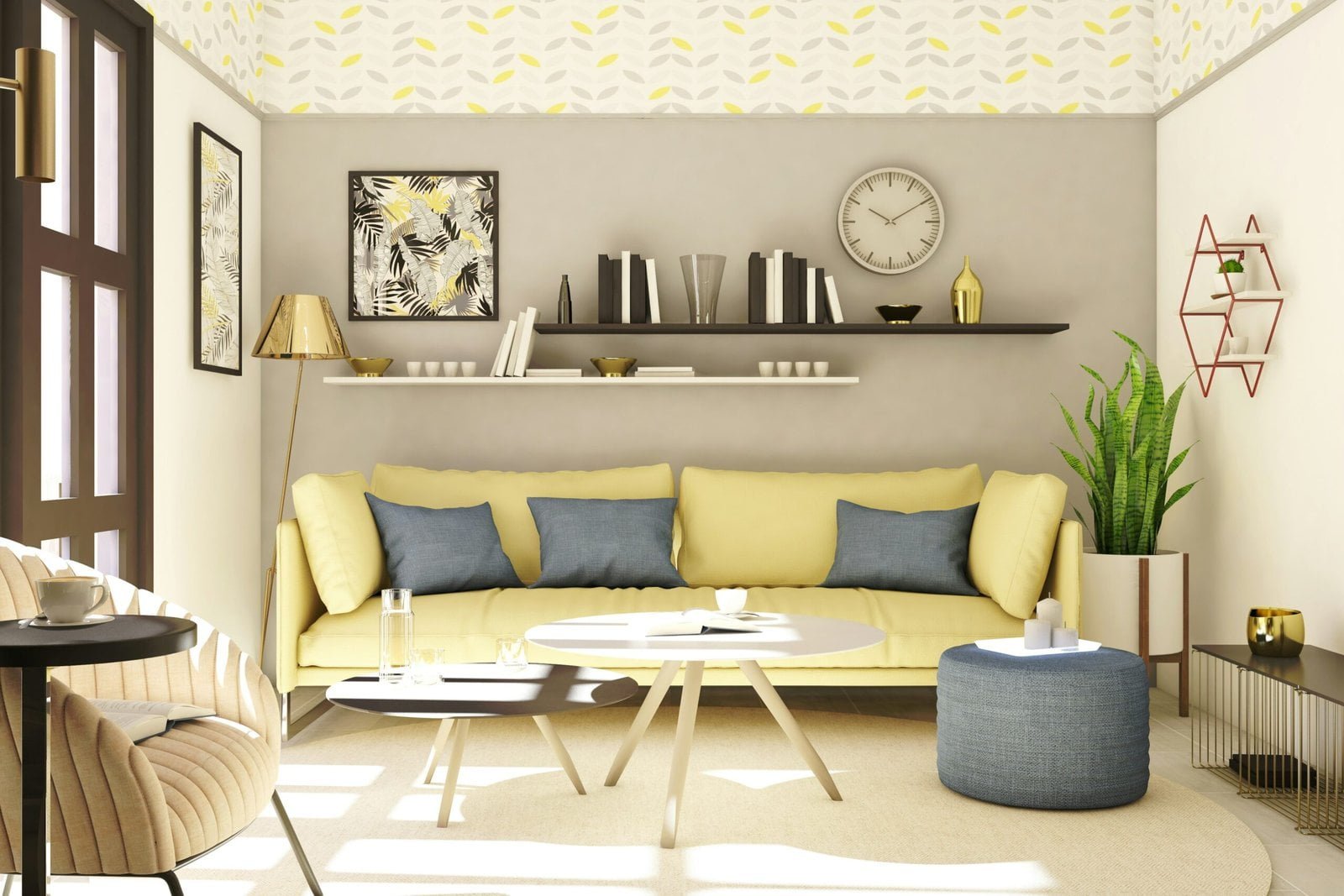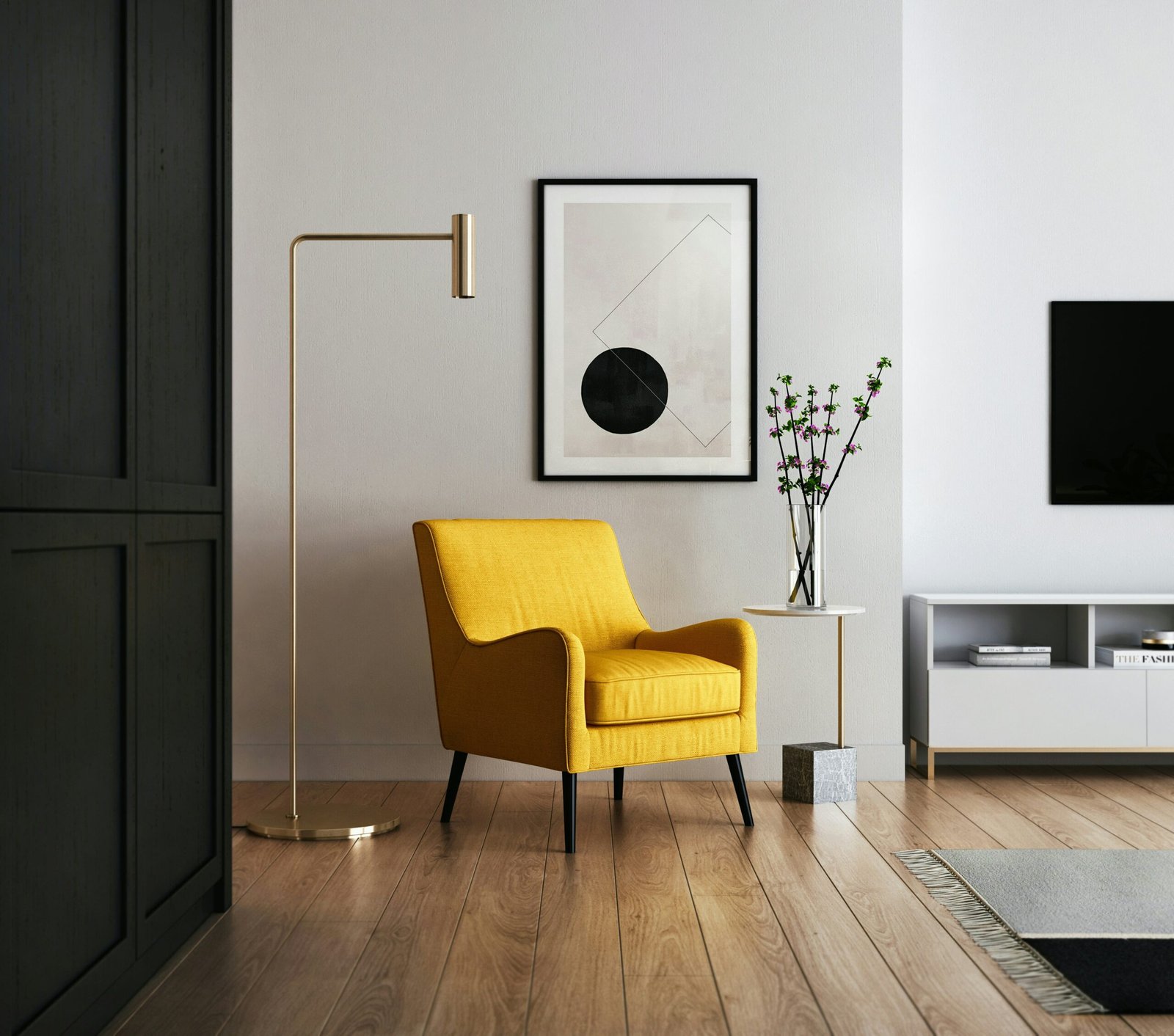Understanding Your Space
Before embarking on the task of rearranging your living room to accommodate the entire family, it is crucial to start with a comprehensive understanding of your space. The first step is to measure the dimensions of the room. Accurately noting the length, width, and height will provide a clear picture of the amount of space available. This data is essential for planning a layout that not only fits all necessary furniture but also allows for comfortable movement.

Please, read our post and do not forget to check our YouTube channel “Grig Stamate”:
https://www.youtube.com/@GrigStamate
You will find there, thousands of designing, furnishing, and decorating ideas for your home interior and outdoors.
Allow me to mention one of them:
40 New LIVING ROOM Ideas [Design, Furniture, Decorations, and more], #2 (video)
In addition to measuring the dimensions, it is important to consider the architectural features present in your living room. Elements such as windows, doors, and built-in features like fireplaces or shelving units can significantly impact the layout. Windows and doors often dictate the placement of furniture, as they are points of entry and exit, and sources of natural light. Built-in features, on the other hand, may serve as focal points around which to arrange seating or entertainment units.
Another critical aspect to assess is the traffic flow within the room. Understanding how people move through space will help in creating a layout that is both functional and comfortable. Identify the main pathways and ensure that there is enough clearance for easy movement. This consideration is especially important in a family setting, where multiple people may be using the space simultaneously. Avoid placing large pieces of furniture in areas that could obstruct movement or cause congestion.
By taking detailed measurements, considering architectural features, and assessing traffic flow, you can lay a solid foundation for designing a living room that meets the needs of your whole family. This foundational understanding will guide your decisions in selecting and arranging furniture, ensuring that the space is both practical and inviting. Proper planning at this stage will ultimately lead to a more harmonious and enjoyable living environment for everyone.
Defining the Purpose of Your Living Room
Defining the purpose of your living room is a critical first step in creating a space that accommodates the entire family. The primary and secondary uses of this room will significantly influence your furniture choices, layout design, and overall functionality. Is your living room primarily a place for family gatherings, where everyone comes together to share their day, play board games, or simply relax? Alternatively, is it the go-to spot for movie nights, featuring a cozy setup with ample seating and a big-screen TV? These considerations will shape the core structure of your living room.
For those who frequently entertain guests, the living room might serve a dual purpose. It should be welcoming and stylish, with flexible seating arrangements that can be easily adjusted based on the number of visitors. Perhaps you envision your living room as a multifunctional space, accommodating both daily family activities and occasional social events. If this is the case, you will need to create zones within the room, ensuring that each section serves its intended purpose without compromising on comfort or style.
Having a clear vision of how your family will use the living room will also guide your decisions on furniture placement and accessories. For example, if the room is mainly used for family gatherings, a large sectional sofa might be ideal, providing plenty of seating for everyone. On the other hand, if movie nights are a top priority, consider arranging the seating to optimize the viewing experience. Understanding the primary and secondary purposes of your living room will help you create a cohesive and functional space tailored to your family’s needs.
Choosing the Right Furniture
When arranging your living room to accommodate the whole family, selecting the right furniture is paramount. The primary consideration should be comfort and functionality for all family members. Opt for a mix of seating options, including sofas, armchairs, and ottomans, to cater to diverse preferences and needs. A generously sized sofa can serve as the centerpiece, providing ample seating space for gatherings, while armchairs and ottomans can offer additional, flexible seating arrangements.
The size of each furniture piece is critical. Ensure that the dimensions of sofas and chairs are suitable for the available space, allowing for comfortable movement and interaction. Comfort should not be compromised; choose pieces with adequate cushioning and support, particularly if they will be used for extended periods. Additionally, consider the durability of the materials. Furniture made from high-quality, sturdy materials will withstand the rigors of daily use, especially in a bustling family environment.
Modular furniture is an excellent choice for families due to its adaptability. These pieces can be reconfigured to suit various activities, from casual lounging to more formal gatherings. For instance, a sectional sofa can be adjusted to create a larger seating area or divided into smaller sections for more intimate settings. This flexibility ensures the living room remains functional and inviting, regardless of the occasion.
Incorporating storage solutions within the furniture can further enhance the room’s functionality. Ottomans with hidden storage compartments or coffee tables with built-in shelves can help keep the living area tidy and organized. This is particularly beneficial for families with children, as it provides a convenient place to store toys and other items when not in use.
Ultimately, the right furniture should blend seamlessly with the overall aesthetic of the living room while meeting the practical needs of the family. By considering size, comfort, durability, and flexibility, you can create a space that is both stylish and accommodating for everyone.
Creating a functional layout in your living room is essential for fostering interaction and making the space inviting for the entire family. Begin by positioning the seating arrangements to encourage conversation. This can be achieved by arranging sofas and chairs in a way that they face each other or are oriented towards a central point of interest. Whether it’s a television, fireplace, or a picturesque window, ensuring that everyone has a clear view of the focal point helps maintain engagement and comfort.
In addition to seating arrangements, consider the use of rugs and lighting to define different zones within the room. Area rugs can delineate spaces for various activities, such as a play area for children, a reading nook, or a primary gathering spot for family discussions. Choose rugs that complement the decor while also being durable enough to withstand high foot traffic.
Lighting plays a crucial role in creating a welcoming ambiance and can be used strategically to highlight different zones. Incorporating a mix of overhead lighting, floor lamps, and table lamps can provide both functional and accent lighting. For instance, a reading corner would benefit from a well-placed floor lamp, while a central chandelier or ceiling light fixture can offer ample illumination for the main seating area.
Another key aspect of a functional layout is ensuring there is enough space for movement and accessibility. Avoid overcrowding the room with too much furniture; instead, opt for pieces that offer both style and practicality. Multi-functional furniture, such as ottomans with storage or coffee tables with additional shelving, can help keep the room organized without sacrificing space.
By thoughtfully arranging furniture, utilizing rugs to define spaces, and incorporating well-planned lighting, you can create a living room layout that is both functional and welcoming for the whole family. This approach ensures that the space not only looks aesthetically pleasing but also promotes interaction and comfort for everyone.
Incorporating Storage Solutions
Maximizing storage in your living room is essential for maintaining a tidy and functional space that can accommodate the entire family. Proper storage solutions not only help organize toys, books, and electronics but also enhance the overall aesthetic appeal of the room. One effective strategy is to integrate built-in cabinets and shelves. These provide ample space for storing various items while seamlessly blending with the room’s decor. Built-in units can be customized to fit the dimensions of your living room, ensuring that every inch of space is utilized efficiently.
Another valuable addition to your living room is multi-purpose furniture. Pieces like storage ottomans and coffee tables with hidden compartments serve dual functions, offering both seating or surface area and extra storage. These types of furniture are particularly beneficial in smaller living rooms where space is at a premium. Storage ottomans, for instance, can hold children’s toys, blankets, or magazines, keeping the room uncluttered and organized.
It’s crucial to ensure that storage solutions are accessible to all family members, including children. This can be achieved by placing frequently used items in lower cabinets or shelves that are within their reach. Designating specific storage areas for different family members can also promote responsibility and ease of access. For example, having a designated spot for children’s toys and another for remote controls and electronics can simplify the process of finding and returning items to their proper place.
Incorporating creative and functional storage solutions into your living room design not only helps to keep the space organized but also makes it a more enjoyable and comfortable environment for the entire family. By carefully planning and selecting the right storage options, you can transform your living room into a clutter-free haven that meets the needs of everyone in the household.
Creating a living room that is both aesthetically pleasing and practical for the entire family requires a thoughtful approach. Striking the right balance between style and functionality begins with the selection of materials and fabrics that are durable and capable of withstanding the rigors of daily use. Opting for high-quality, stain-resistant textiles for upholstery and choosing furniture constructed from robust materials can ensure longevity and ease of maintenance.
Incorporating family-friendly design elements is key to making the space welcoming and safe. Rounded edges on furniture pieces, such as coffee tables and side tables, can help prevent injuries, especially for young children. Additionally, choosing furniture with washable slipcovers can offer a stylish yet practical solution, allowing for easy cleaning and maintenance, thus extending the life of your furnishings.
Personalizing the living room with family photos and meaningful decor items can also enhance the overall ambiance. Displaying cherished family moments in stylish frames or creating a gallery wall can add a personal touch while serving as a conversation starter. Meaningful decor elements, such as heirlooms or travel souvenirs, can further infuse the space with character and warmth, making it truly reflective of the family’s unique identity.
Furthermore, integrating storage solutions into the design can help maintain an organized and clutter-free environment. Multi-functional furniture pieces, such as ottomans with hidden storage or built-in shelving units, can provide ample space to tuck away toys, books, and other everyday items, ensuring that the living room remains tidy and visually appealing.
Balancing aesthetics and practicality in your living room design enables you to create a space that is not only beautiful but also functional and accommodating for the whole family. By considering durability, safety, personalization, and organization, you can achieve a harmonious living environment that caters to the diverse needs of all family members.
Lighting plays a crucial role in transforming your living room into a versatile space that caters to the needs of the entire family. To ensure your living room is both functional and inviting, it is essential to integrate various types of lighting, including ambient, task, and accent lighting.
Ambient Lighting
Ambient lighting serves as the primary source of illumination in your living room. It provides a comfortable level of brightness without causing glare. Overhead fixtures, such as chandeliers, pendant lights, and recessed lighting, are ideal for creating a well-lit foundation. To enhance the ambience, consider utilizing soft white bulbs that emit a warm glow, fostering a cozy and welcoming atmosphere.
Task Lighting
Task lighting is essential for activities that require focused light, such as reading, working on a puzzle, or playing board games. Table lamps, floor lamps, and under-cabinet lighting are excellent options for task lighting. Position these fixtures strategically to ensure they provide adequate light for specific tasks without overshadowing the room’s overall illumination. Adjustable and swing-arm lamps can add flexibility, allowing you to direct light exactly where it’s needed.
Accent Lighting
Accent lighting enhances the aesthetic appeal of your living room by highlighting architectural features, artwork, or decor elements. Wall sconces, picture lights, and track lighting are effective in drawing attention to focal points within the room. Use accent lighting sparingly to avoid overwhelming the space, and opt for fixtures that complement your living room’s design and color scheme.
Smart Lighting Solutions
Incorporating smart lighting solutions can significantly enhance the functionality and convenience of your living room. Dimmable lights allow you to adjust the brightness according to different activities and moods. Smart bulbs and lighting systems, which can be controlled via smartphone apps or voice assistants, offer unparalleled flexibility. You can easily switch between different lighting modes, set schedules, and even create custom scenes to match various occasions.
By thoughtfully combining ambient, task, and accent lighting, and integrating smart lighting solutions, you can create a well-lit and adaptable living room that meets the diverse needs of your family. The right lighting setup not only enhances the visual appeal of the space but also ensures comfort and functionality for all activities.
Adding Personal Touches
Infusing your living room with elements that reflect your family’s personality and interests is pivotal in creating a space that feels both unique and welcoming. One effective way to achieve this is by incorporating artwork that resonates with your family’s tastes and experiences. Whether it’s a striking painting, a serene landscape, or a modern abstract piece, artwork has the power to transform the ambiance of your living room, making it a reflection of your collective identity.
Family heirlooms also play a significant role in adding a personal touch. These cherished items—be it a vintage clock, a handcrafted quilt, or a set of antique books—carry stories and memories that can enrich the atmosphere of your living room. Displaying these heirlooms not only honors your heritage but also provides conversation starters that can bring family members closer together.
DIY projects offer another avenue for personalization. Creating custom furniture, handmade decorations, or bespoke storage solutions can imbue your living room with a sense of ownership and creativity. These projects can be a fun family activity, fostering collaboration and allowing each member to contribute to the space’s design in their own unique way.
Consider designing a gallery wall or a dedicated display area for children’s artwork. This not only gives your kids a sense of pride and accomplishment but also adds a vibrant, dynamic element to your living room’s decor. Rotating the displayed pieces periodically can keep the space feeling fresh and continually engaging.
By thoughtfully integrating these personal touches, your living room becomes more than just a functional space; it evolves into a haven that celebrates your family’s shared experiences, values, and artistic expressions. This approach not only enhances the aesthetic appeal but also fosters a warm, inviting atmosphere that welcomes each family member with open arms.
Other related posts from our website:
https://howtobuildahouseblog.com/small-living-big-style-new-modern-living-rooms-with-limited-space/
https://howtobuildahouseblog.com/the-top-50-living-rooms-of-2024/
Thank you so much for your attention.
Stay tuned. We will upload many other amazing posts to our website and videos onto our YouTube channel.
Thank you so much.
for your time and attention.
Best Regards
See you to another post,
Bye, Bye



No Responses